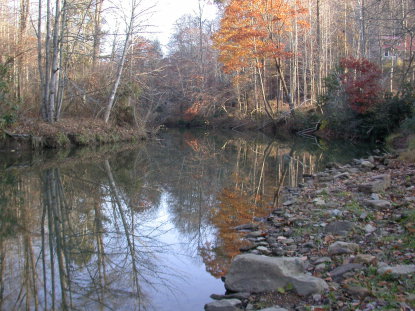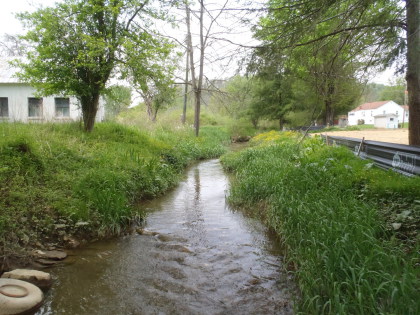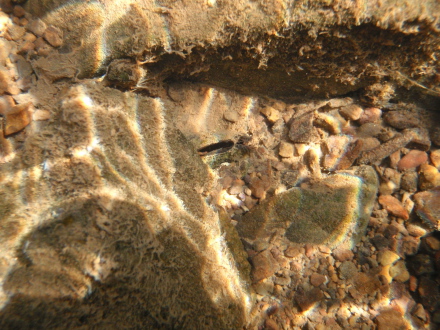So, where do freshwater mussels live?
It seems I am asked this question daily. The most succinct answer I can provide is
"Anywhere, but now almost nowhere."
This question is usually loaded . . . associated with another FAQ,
"Why do I have to do a mussel survey?"
Mussels in the Clinch and Powell rivers of Virginia and Tennessee are found in riffles and shoals. Many of these habitats are far from pristine, having water quality and sediment quality issues. Other reaches of these rivers have clear waters and beautiful physical habitat, but a history of human disturbance so severe that fish communties are depressed and mussels are gone. Or at least they were yesterday . . . some mussels can recolonize a site when historical distrubances are mittigated. Survey results can vary greatly by decade.
The richest assemblages are found in larger streams; however, some species have adapted to life in small streams and can achieve high densities in small streams. How small? We have found listed species in streams no wider than 0.5 meters (or 1.5 feet).
Federally and state-listed species occupy a fraction of their historic range. Most stream habitats do not support listed species. In fact, many streams do not support mussels at all. Nevertheless, listed species could inhabit your stream.
There is a paucity of data for most streams in the United States. And when there is negative information, we often can not rule out the possibility that mussels could be present at such low levels they remain undetected. Only 5-30% of mussels inhabiting a stream are detectable during typical surveys. Many mussels are little brown animals difficult to distinquish from the stream bottom they inhabit. Moreover, many populations persist at low density (< 0.1 per meter square).
If you want to determine if mussels do or do not live here, make sure your survey is sensitive enough to detect low-density populations of cryptic species. We at Daguna Consulting, LLC can help you do that.
Brett Ostby,
Senior Biologist/Co-owner







